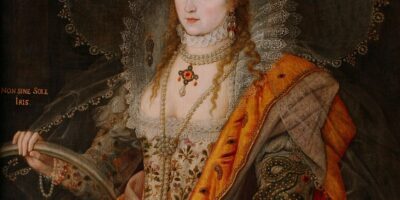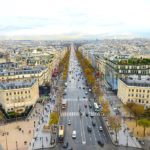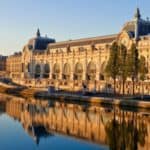15 of the Most Famous Filipinos
The Philippines takes its name from King Philip II of Spain during the Spanish colonization of the islands in the 16th century a situation that lasted 333 years.
The Philippines has many ties with the West. For example, it’s the second-most-populous Asian country with English as an official language.
Despite the prominence of such Anglo-European cultural characteristics, the peoples of the Philippines are Asian in consciousness and aspiration.
Filipinos have been variously described as friendly, outgoing, sensitive, nosy, garrulous, direct, feisty, good-natured, clever, generous, gracious, casual, fun-loving, and hospitable.
The people of the Philippines collectively are called Filipinos. The ancestors of the vast majority of the population were of Malay descent and came from the Southeast Asian mainland.
Contemporary Filipino society consists of nearly 100 culturally and linguistically distinct ethnic groups
Here are the 15 most famous Filipinos.
Click here to read more about other famous and influential people.
1.Corazon Aquino- Politician

Photo by Gerald Johnson – Wikimedia
President Corazon Aquino was born in 1933, in Manila. She is the widow of Benigno Aquino Jr., an opposition leader assassinated by the Ferdinand Marcos regime.
She reluctantly ran for the presidency in the wake of her husband’s death and became symbolic of the Filipino people’s desire for change following nearly two decades of authoritarian rule.
Aquino assumed office in 1986, following the removal of Ferdinand Marcos from the presidential office. She served as president of the Philippines from 1986 until 1992.
As President, Aquino restored democracy appointing a fifty-member commission to write a new constitution and overseeing the re-implementation of local elections and presidential elections.
Aquino’s presidency is remembered with mixed emotions by Filipinos. She is considered a heroine by many for her role in replacing Marcos, but critics note that she restored the post-colonial Filipino oligarchy.
2. Manny Pacquiao- Boxer& Politician

Photo by Geremy Pintolo- Wikimedia
Manny Pacquiao is a Filipino professional boxer, media celebrity, and politician who became world-famous for winning boxing titles in more weight classes than any other boxer in history.
He changed the game of boxing and became a national hero worth millions, and arguably the most famous Filipino in the world.
Manny rose from abject poverty to the pinnacle of his sport, and he also eventually became a senator in the Philippines
His 24 pay-per-view bouts have generated 20 million buys and an estimated $1.25 billion in revenue. In 2015 bout against Floyd Mayweather remains the best-selling fight in the history of boxing with 4.6 million PPV buys.
Pacquiao is a member of the country’s Senate since 2016.
3. Rodrigo Durtete- Politician
Rodrigo Roa Duterte born on March 28, 1945, also known as Digong, Rody, and by the initials PRRD, is a Filipino politician
Duterte was elected president of the Philippines in 2016 on the strength of a campaign that promised the execution of drug dealers and other criminals.
So far his war on crime has already resulted in the killing of thousands of people across the archipelago country.
Duterte’s raw and vulgar vocabulary keeps him in the headlines: he called Obama “son of a whore” and has used homophobic slurs to describe opponents.
4. Charice/Jake Zyrus-Singer & Actor

Photo by Enrique Guadiz – Wikimedia
Charmaine Clarice Relucio Pempengco, aka Charice, is a Filipina singer who rose to popularity through YouTube. She underwent gender reassignment and identifies as a male by the name Jake Zyrus
Dubbed by Oprah Winfrey as “the most talented girl in the world”, he released her first international studio album, Charice, in 2010.
The album entered the Billboard 200 at number eight, making him the first Asian solo singer in history to land in the Top 10 of the Billboard 200 albums chart.
Zyrus released the single “Pyramid” which featured singer Iyaz. It is her most successful single to date, charting within the top 40 in several countries, and debuting on The Oprah Winfrey Show where she sang live vocals.
He joined the cast of the TV series Glee as Sunshine Corazon.
Jake Zyrus also served as one of the four judges of the Philippine version of The X Factor.
5. Imelda Marcos- Politician

US President Lyndon B. Johnson and Philippine First Lady Imelda Marcos dancing Photo by John F. Kennedy Presidential Library and Museum – Wikimedia
Marcos was known for her lavish lifestyle, endless socializing, and taste for designer clothes.
She spent more than two decades as the First Lady of the Philippines, during which time she and her husband are said to have illegally amassed a fortune of close to $10 billion.
Her luck changed in 1986 when a revolution in the Philippines forced the Marcoses into exile in Hawaii.
Imelda returned to the country on the death of Ferdinand died in 1989.
Marcos has won four elections to the House of Representatives but her tenure is tainted by lawsuits and convictions on corruption charges.
Her collection of 2,700 pairs of shoes is often remembered as a symbol of extravagance.
6. Christian Bautista- Actor, Model & Singer

Photo by Paul Chin – Wikimedia
Christian Bautista, is a Filipino singer, actor, host, and model. He first gained popularity in Indonesia with his hit single “The Way You Look at Me” in 2004.
Bautista has since appeared in a multitude of shows across Asia, bringing the Filipino talent and his well-known charm to the global stage
He was a finalist in Star In A Million, a Philippine reality winning 4th place. After the contest, he signed a recording contract with Warner Music Philippines and released his self-titled debut album, Christian Bautista.
The multi-platinum album established his name as an OPM artist with songs such as “The Way You Look At Me”, “Colour Everywhere” and “Hands To Heaven” topping the charts.
The singer gained popularity not only in the Philippines but in other countries in Southeast Asia such as Indonesia, Singapore, Malaysia, and Thailand.
The singer also collaborated with fellow Filipino singers Nina, Sitti, Rachelle Ann Go, Sarah Geronimo, Sheryn Regis, Erik Santos, and Mark Bautista.
7. Josef Rizal- Independence Hero & Writer
Jose Rizal became a Philippine national hero because he fought for freedom in an exceedingly silent but powerful way.
He expressed his love for the Philippines through his novels, essays, and articles.
Philippines freedom heroes are Jose Rizal along with Andres Bonifacio and Apolinario Mabini.
That’s because he was a key member of the Filipino Propaganda Movement, which advocated for political reforms during the Spanish rule of the country.
The Spanish government executed Rizal in 1896. He paid the ultimate price for his country.
In an everlasting tribute, Pinoys celebrate Jose Rizal Day every December 30th, the anniversary of his death.
8. Josefa Llanes Escoda- Suffragist & Social Activist

Photo courtesy of Central Bank of Philippines –Wikimedia
Many military forces have colonized The Philippines.
Josefa Llanes Escoda’s contributions are symbolic of the capabilities and commitment of Filipina social workers. She dedicated her career and life to advancing social justice.
Escoda, who was a suffragist, amplified the political voices of all Filipinas. In 1923, she served as the executive secretary of the National Federation of Women’s Clubs (NFWC).
She fought for women’s involvement in the Philippine government soon after suffrage. Her forward-thinking, feminist ideals understood the power women possessed with their new civic identity.
After training with the Boy Scouts in the US, Escoda returned home to develop Girl Scout leaders. She founded the Girls Scouts of the Philippines and was the group’s first executive director.
The Japanese military arrested Escoda for providing services to Filipino POWs, Imprisoned and executed her.
The Philippines honors Escoda with her image on the 1000 Philippine peso. The country’s currency features her image.
Nevertheless, her legacy is more valuable than money.
9. Cristeta Comerford- White House Chef

Photo by Tina Hager – Wikimedia
Born in Manila, Philippines, Cristeta “Cris” Comerford was the executive chef at the United States White House becoming the first woman and Filipino-American to hold the position.
The Filipino-born chef studied food technology at the University of the Philippines Diliman and immigrated to the United States at the age of 21.
Trained in French classical techniques and specializing in ethnic and American cuisine, she started as an Assistant Chef in the White House kitchen in 1995.
The chef was responsible for developing avant-garde menus that showcased American foods and wines for special White House events.
One such occasion was the State Dinner in honor of Her Excellency, Gloria Macapagal-Arroyo, President of the Philippines.
Comerford is of the longest-serving White House executive chefs in history and has spent more than a decade feeding four presidents and their families.
Read more on other famous Filipinos here.
10. Dr. Josette Biyo- Educator
Josette Biyo was born Januiay, Iloilo, Phillipines. She completed a baccalaureate in Biological Sciences at the University of the Philippines in the Visayas. She also earned her Ph.D. in Biology from De La Salle University.
Despite numerous options, Dr Biyo chose to teach a rural community in her home province, Iloilo where she leveraged her knowledge of biology to educate the residents in primary health care using local plants and ingredients.
It is while serving at the Philippine Science High School Western Visayas that she developed and refined a teaching methodology that fosters a “culture of science”.
She has international speaking engagements on her teaching philosophy on teaching science and research.
Dr. Josette Biyo is the first Asian educator to win the International Excellence in Teaching Award. She was awarded at the Intel International Science and Engineering Fair in 2002.
“Planet Biyo,” found between Mars and Jupiter also known as asteroid 13241 Biyo was named in her honor by the Massachusetts Institute of Technology (MIT).
The archipelago of the Philippines has surely given us some colorful characters. They will remain emblazoned in our memories for a long time.
11. Gabriela Silang- Military
Mary Josefa Gabriela Carino de Silang was a Filipino military leader who is known for her role as the female leader of the Ilocano independence movement.
She is remembered as the Joan of Arc of Ilocandia.
The Order of Gabriela Silang is the sole third-class national decoration awarded by the Philippines whose membership is restricted to women.
12. Pia Wurtzbach- Model and Actress
Pia Alonzo Wurtzbach professionally known as Pia Romero. She is a Filipina model, actress, and beauty queen. Pia was crowned Miss Universe 2015 and was the first Filipina to win the pageant in four decades. Pia is the third Filipina to win the Miss Universe title after Gloria Diaz and Margie Moran.
She has appeared in several films including Kung Ako Na Lang Sana, All My Life, and All About Love.
13. Catriona Gray- Model and Singer

Avito C. Dalan for the Philippine News Agency, Public domain, via Wikimedia Commons
Catriona Elisa Magnayon Gray is a Filipina model, singer, television personality, and beauty queen. She is known for winning the Miss Universe 2018 title.
On October 2016, Catriona was crowned Miss World Philippines 2016 where she won the Best in Swimsuit, Best in Evening Gown, Best in Fashion Runway, and Best in Talent awards.
Catriona also won the Multimedia Award, Talent Award, and Top 5.
Click here to read more about other famous people.
14. Lea Salonga- Singer and Actress
Maria Lea Carmen Imutan Salonga has been dubbed the Pride of the Philippines. She is known for her roles in musical theatre and for supplying the singing voices of two Disney Princesses Jasmine and Mulan.
Lea has achieved numerous honors and accolades including the Laurence Olive Award, Drama Desk Award, Theatre World Awards, and Outer Critics Circle Award.
She is noted as the first Asian actress to win a Tony Award and the second-youngest actress to win Best Performance by a Leading Actress in a Musical.
15. Vanessa Lachey- Actress and Fashion Model
Vanessa Joy Lachey Minnila is an American actress, beauty pageant, fashion model, and television host. She was born in Angeles City, Philippines.
She has starred in two network sitcoms and hosted various competition and reality shows including Love Is Blind, Top Chef Junior, and The Ultimatum: Marry or Move On.
Vanessa has also been on numerous television series including That’s Life, How I Met Your Mother, Hawaii Five-0, and American Housewife.
Read more on other famous Filipinos here.
Planning a trip to Paris ? Get ready !
These are Amazon’s best-selling travel products that you may need for coming to Paris.
Bookstore
- The best travel book : Rick Steves – Paris 2023 – Learn more here
- Fodor’s Paris 2024 – Learn more here
Travel Gear
- Venture Pal Lightweight Backpack – Learn more here
- Samsonite Winfield 2 28″ Luggage – Learn more here
- Swig Savvy’s Stainless Steel Insulated Water Bottle – Learn more here
Check Amazon’s best-seller list for the most popular travel accessories. We sometimes read this list just to find out what new travel products people are buying.











